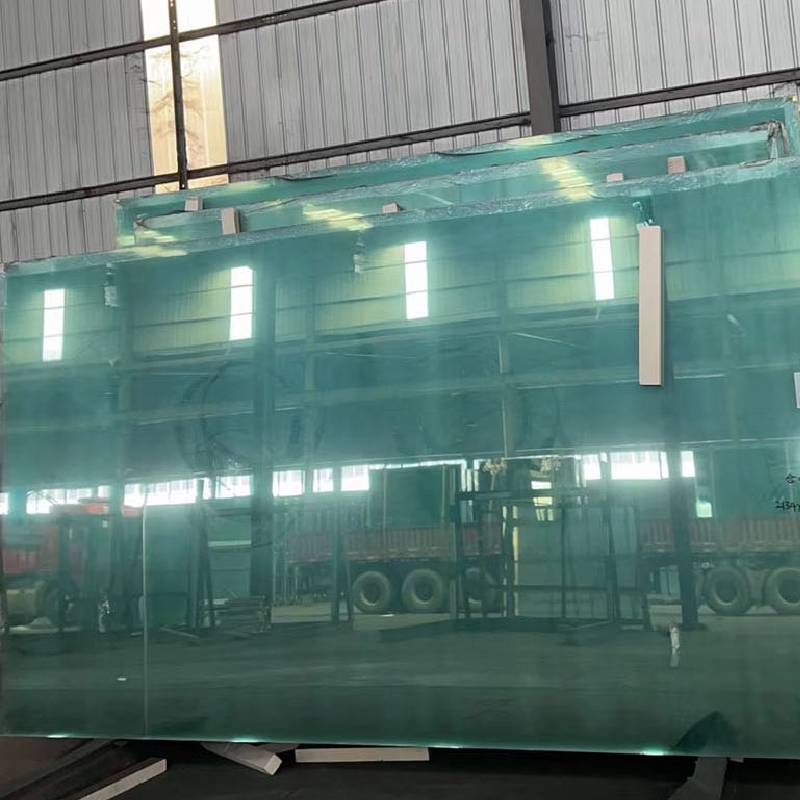The Art and Science of Mirror Reflective Glass
In the modern world of architecture and design, one element stands out for its unique ability to combine aesthetics with functionality mirror reflective glass. This material, an ingenious blend of advanced technology and artistic vision, has transformed how we think about buildings and their interaction with the environment. From shimmering skyscrapers to subtle residential installations, mirror reflective glass offers a myriad of benefits that extend beyond mere beauty.
At its core, mirror reflective glass is essentially a glass pane coated with a thin metallic layer, allowing it to reflect light while permitting visibility from one side. This dual functionality provides architects with a powerful tool to create spaces that are not only visually striking but also efficient in terms of energy use. By reflecting sunlight, these glass panes can significantly reduce the need for artificial lighting and help in temperature regulation, making buildings more sustainable and comfortable.
One of the most captivating features of mirror reflective glass is its ability to blend with the surrounding environment. During the day, these surfaces can reflect their surroundings, making the building appear as if it is an extension of the landscape. This not only enhances the aesthetic appeal but also can help in reducing the urban heat island effect, an increasingly important consideration as cities grow denser and hotter. In contrast, at night, when the interior lights are illuminated, a different charm emerges. The reflective nature of the glass allows for a stunning display of light and shadow, creating a dynamic visual narrative that changes throughout the day.
mirror reflective glass
Moreover, mirror reflective glass plays a crucial role in the promotion of privacy without compromising daylight. In commercial buildings, for example, offices can enjoy significant natural light while mitigating the feeling of being under constant scrutiny from the outside. This aspect is particularly valuable in urban settings where buildings are in close proximity. The glass acts as a filter, allowing light to enter while keeping prying eyes at bay, thus offering a balance between transparency and seclusion.
The use of mirror reflective glass is not without challenges, however. One of the primary concerns is glare, which can be uncomfortable for both building occupants and those nearby. Architects and designers must carefully consider the orientation of the building and the types of reflective materials used to mitigate this issue. Additionally, the environmental impact of manufacturing and disposing of such glass needs to be addressed, prompting an industry-wide push toward recycling and sustainable production methods.
In conclusion, mirror reflective glass represents a remarkable intersection of art, science, and sustainability in contemporary architecture. It allows for the creation of structures that harmoniously interact with their surroundings while providing practical benefits such as energy efficiency, privacy, and aesthetic appeal. As technology advances, we can expect even more innovative uses for this versatile material, helping cities evolve into more beautiful and functional spaces. Whether gazing up at a towering glass facade reflecting the sky or enjoying the tranquility of a sunlit interior, the allure of mirror reflective glass continues to captivate and inspire. Its importance in the architectural narrative is undeniable, making it a key player in the quest for a sustainable and aesthetically pleasing built environment.
 Afrikaans
Afrikaans  Albanian
Albanian  Amharic
Amharic  Arabic
Arabic  Armenian
Armenian  Azerbaijani
Azerbaijani  Basque
Basque  Belarusian
Belarusian  Bengali
Bengali  Bosnian
Bosnian  Bulgarian
Bulgarian  Catalan
Catalan  Cebuano
Cebuano  Corsican
Corsican  Croatian
Croatian  Czech
Czech  Danish
Danish  Dutch
Dutch  English
English  Esperanto
Esperanto  Estonian
Estonian  Finnish
Finnish  French
French  Frisian
Frisian  Galician
Galician  Georgian
Georgian  German
German  Greek
Greek  Gujarati
Gujarati  Haitian Creole
Haitian Creole  hausa
hausa  hawaiian
hawaiian  Hebrew
Hebrew  Hindi
Hindi  Miao
Miao  Hungarian
Hungarian  Icelandic
Icelandic  igbo
igbo  Indonesian
Indonesian  irish
irish  Italian
Italian  Japanese
Japanese  Javanese
Javanese  Kannada
Kannada  kazakh
kazakh  Khmer
Khmer  Rwandese
Rwandese  Korean
Korean  Kurdish
Kurdish  Kyrgyz
Kyrgyz  Lao
Lao  Latin
Latin  Latvian
Latvian  Lithuanian
Lithuanian  Luxembourgish
Luxembourgish  Macedonian
Macedonian  Malgashi
Malgashi  Malay
Malay  Malayalam
Malayalam  Maltese
Maltese  Maori
Maori  Marathi
Marathi  Mongolian
Mongolian  Myanmar
Myanmar  Nepali
Nepali  Norwegian
Norwegian  Norwegian
Norwegian  Occitan
Occitan  Pashto
Pashto  Persian
Persian  Polish
Polish  Portuguese
Portuguese  Punjabi
Punjabi  Romanian
Romanian  Russian
Russian  Samoan
Samoan  Scottish Gaelic
Scottish Gaelic  Serbian
Serbian  Sesotho
Sesotho  Shona
Shona  Sindhi
Sindhi  Sinhala
Sinhala  Slovak
Slovak  Slovenian
Slovenian  Somali
Somali  Spanish
Spanish  Sundanese
Sundanese  Swahili
Swahili  Swedish
Swedish  Tagalog
Tagalog  Tajik
Tajik  Tamil
Tamil  Tatar
Tatar  Telugu
Telugu  Thai
Thai  Turkish
Turkish  Turkmen
Turkmen  Ukrainian
Ukrainian  Urdu
Urdu  Uighur
Uighur  Uzbek
Uzbek  Vietnamese
Vietnamese  Welsh
Welsh  Bantu
Bantu  Yiddish
Yiddish  Yoruba
Yoruba  Zulu
Zulu 

